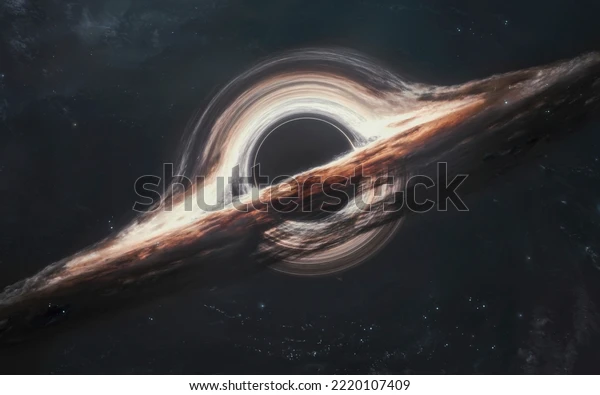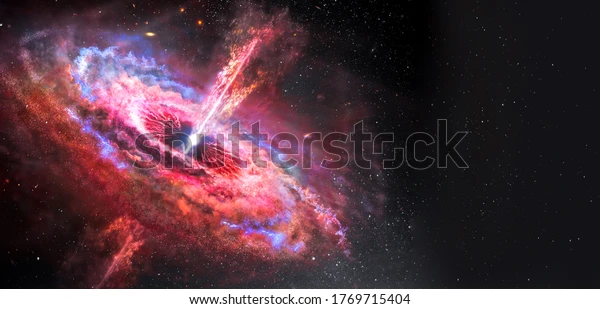?Do we live in a black hole

Let's go back in time: before the arrival of Man, before the appearance of the Earth, before the formation of the sun, before the birth of galaxies, before any light… there was the Big Bang. It was 13.8 billion years ago.
But before that ? Many physicists argue that there was nothing before that. Time began to tick, they insist, at the time of the Big Bang and pondering all that might have happened before is not science. We will never understand what the pre-Big Bang looked like, or what it was made of, or who caused its explosion that led to the formation of our universe. All these notions go beyond the comprehension of which Man is capable.
Yet some non-conventional scientists disagree. According to the theory of these physicists, shortly before the Big Bang, all the mass and energy of the nascent universe was compacted into an incredibly dense ball – but not infinite. Let's call it the seed of a new universe.
One imagines this seed to be incredibly small in size, perhaps trillions of times smaller than any particle observable by humans today. And yet, it is a particle capable of triggering the particle of all other particles, not to mention galaxies, the solar system, planets and living beings.
If there was only one thing to call the God Particle, it sure sounds like it.
But how can such a seed form? There is indeed an idea that has been circulating for a few years, notably supported by Nikodem Poplawski of the University of New Haven, according to which the seed of our universe was forged in the ultimate oven, probably the most extreme environment there is: in a black hole.

THE MULTIPLICITY OF THE MULTIVERSE
Before going any further, it is essential to bear in mind that over the past twenty years, many theoretical physicists have come to believe that our universe is not the only one. Instead, we're more likely part of the multiverse, a huge array made up of separate universes, each centered on its star shining in the night sky.
How, or even if, one universe relates to another is the subject of much discussion, all highly speculative and unprovable at this time. According to a convincing theory, the seed of the universe resembles that of a plant: it is a fragment of essential material, very compressed, hidden in a protective envelope.
This is precisely what is created within a black hole. Black holes are the remains of giant stars. When such a star runs out of energy, its core destroys itself inside and gravity takes care of transforming everything into an incredibly powerful whole. Temperatures reach 100 billion degrees; the atoms are crushed; the electrons are crushed; and all these elements are tossed about again and again.
At this point, the star has become a black hole whose gravitational pull is such that not even a beam of light can escape from it. The boundary between the interior and exterior of a black hole is called the "event horizon". Huge black holes, some millions of times more massive than the sun, have been discovered at the center of nearly every galaxy, including our own Milky Way.
INFINITE QUESTIONS
If you rely on Einstein's theories to determine what happens at the bottom of a black hole, your calculations will lead you to an infinitely dense and small place: a hypothetical concept called a singularity. But infinities don't really have a place in nature, and the gap widens with Einstein's theories, which provide an incredibly good understanding of the cosmos but tend to break down when huge forces are involved. like those in action in a black hole or those that punctuated the birth of our universe.
Physicists like Dr. Poplawski argue that matter in a black hole reaches a point at which it can no longer be crushed. As small as it may be, this "seed" weighs the weight of a billion suns and is very real, unlike a singularity.

According to Dr. Poplawski, the compaction process ceases because the black holes are rotating, which endows the compacted seed with a good twist. It is then not only small and heavy; it becomes twisted and compressed, like those toys mounted on springs, ready to spring from their box.
Toys that can quickly retract when forced to. Call it the Big Bang – or the “big bounce” as Dr. Poplawski likes to say.
In other words, it's possible that the black hole is like a conduit – a “one-way door,” says Dr. Poplawski – between two universes. This means that if you fall into the black hole at the center of the Milky Way, it is conceivable that you (or at least the fully exploded particles of which you were once composed) will end up in another universe. This is not located in ours, as the scientist adds: the hole simply acts as a link, like a shared root that would connect two poplars to each other.
What about the rest of us here in our own universe? We could then well be the product of another, older universe. Let's call it our "mother" universe. The seed that this mother forged within a black hole may have had its big rebound 13.8 billion years ago. And even though our universe has expanded rapidly since then, we may still be lurking behind the event horizon of a black hole.
Source : websites

